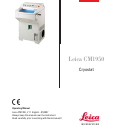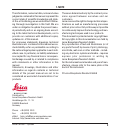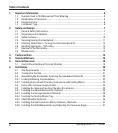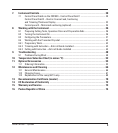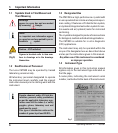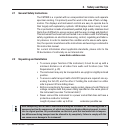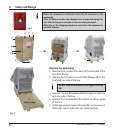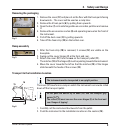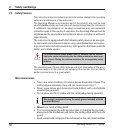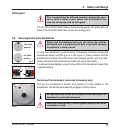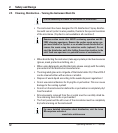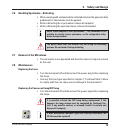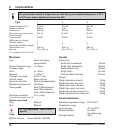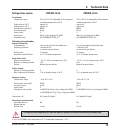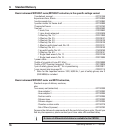
7
Leica CM1950 – Cryostat
2.1 General Safety Instructions
The CM1950 is a cryostat with an encapsulated microtome and separate
specimen cooling. It is primarily used for work in the area of fast-cut diag-
nostics. The displays and instrument controls are easy to operate due to
their largely self-explanatory symbols. LED displays make it easy to read.
The cryochamber is made of seamlessly welded, high-quality stainless steel
that is free of difficult-to-access corners and thus easy to clean and disinfect.
This instrument has been built and tested in accordance with the following
safety regulations on electrical measuring, control, regulating and labora-
tory devices. In order to maintain this condition and to ensure safe opera-
tion, the operator must observe the instructions and warnings contained in
this instruction manual.
For current information about applicable standards, please refer to the
CE declaration of conformity on our Internet site:
www.histo-solutions.com
2.2 Unpacking and Installation
• To ensure proper function of the instrument, it must be set up with a
minimum distance on all sides from walls and furniture (see ‘Site
Requirements’, p. 20)
• The instrument may only be transported in an upright or slightly inclined
position.
• To ensure a safe transport with a fork lift 3 people are required: one op-
erating the fork lift, and the other 2 holding the instrument on either
side to prevent it from sliding down.
• Before connecting to the power supply system, please check if the local
voltage complies with the power rating specified on the name plate of
the instrument (see also ‘Technical data’)!
• Never connect the instrument to a power socket that does not have a
protective conductor terminal.
Length of power cable: up to 3.5m extension possible: no
After transporting, wait at least 4 hours before turning the instrument on. This waiting period is
necessary to allow the compressor oil, which may have been displaced during transport, to return
into its original position. Any condensation on electrical parts that has formed due to tempera-
ture differences during transport must be allowed to dry completely. Failure to comply with this
can cause severe damage to the instrument!
2. Safety and Design



